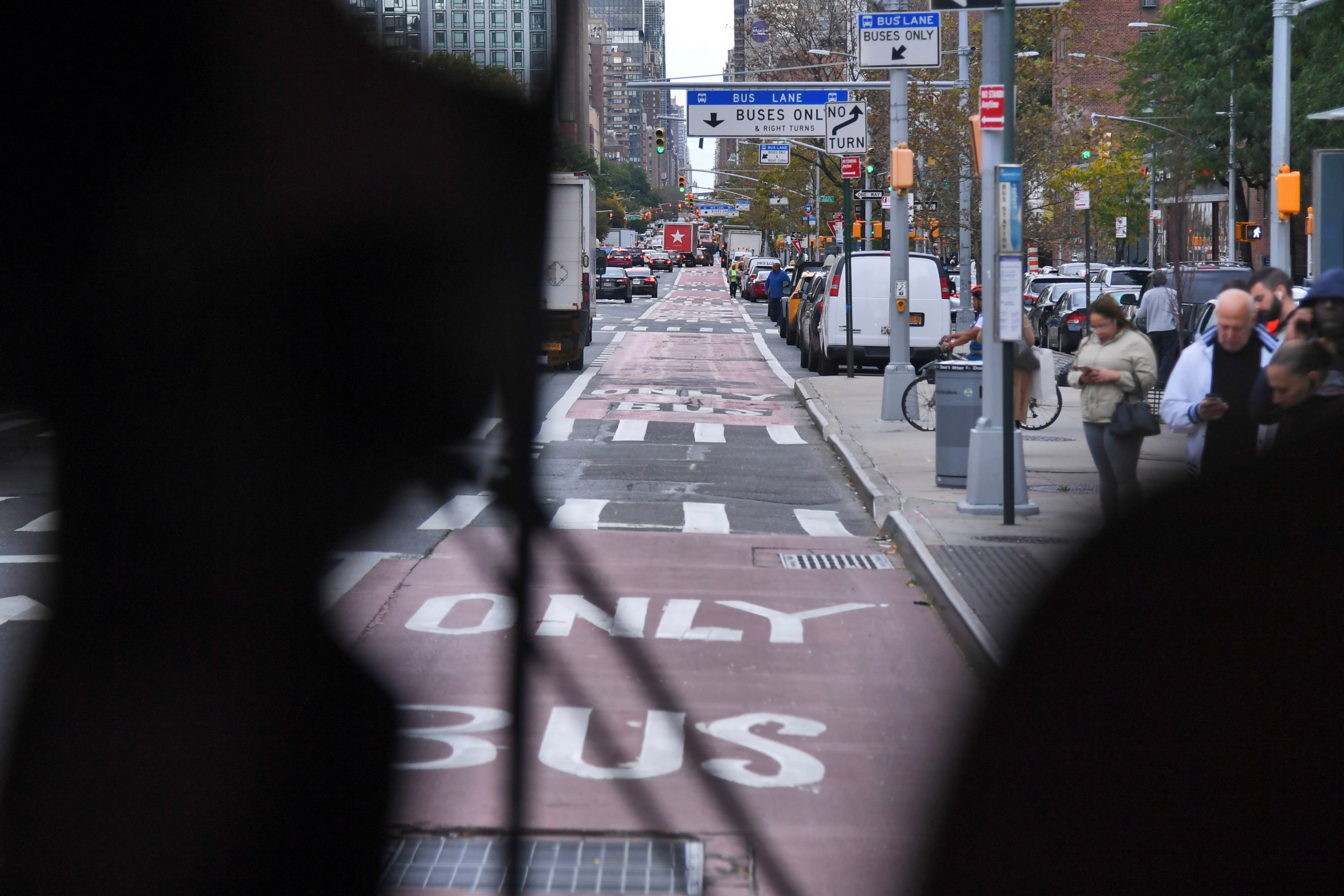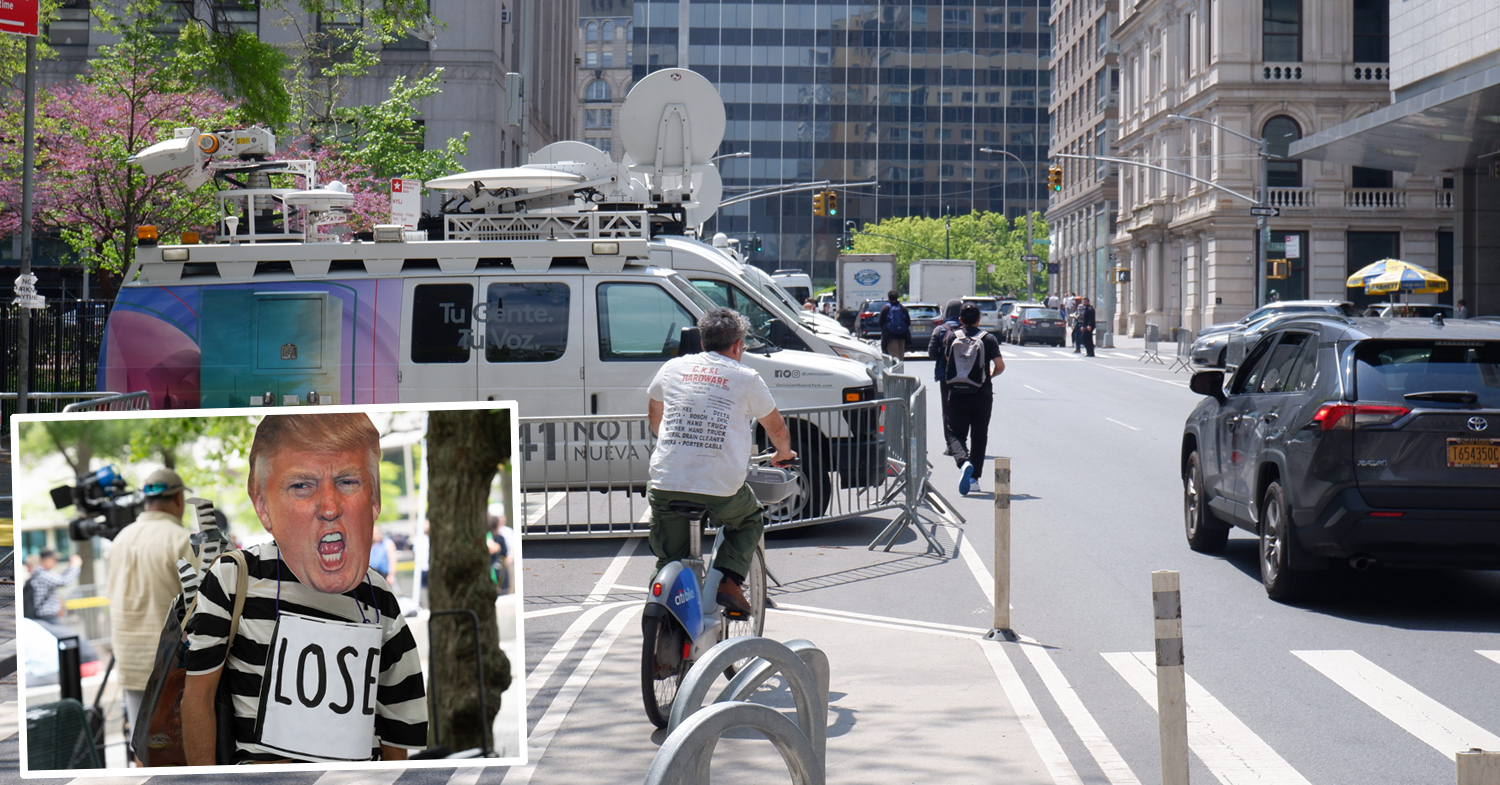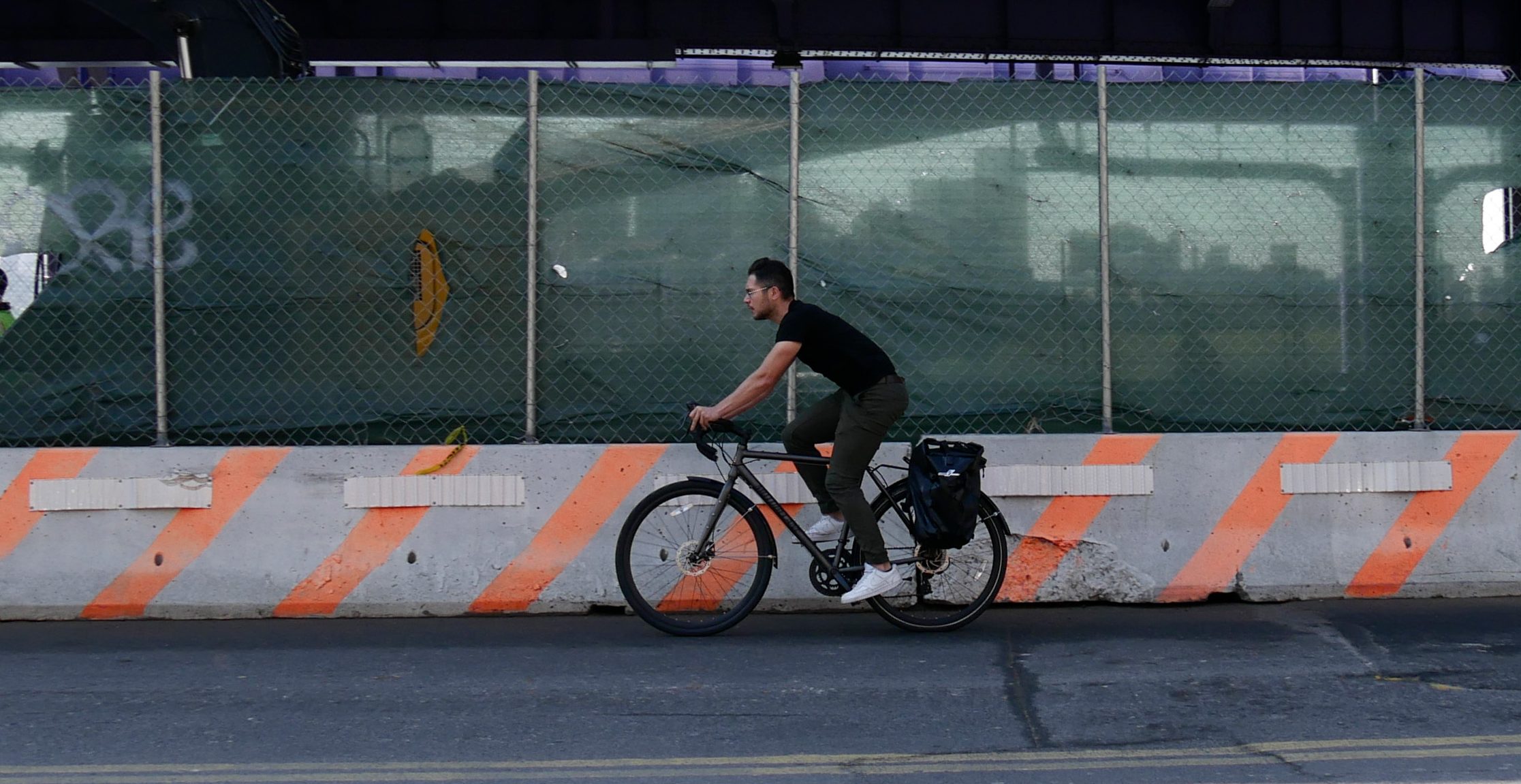Mayor’s ‘Open Streets’ Leave Out Neighborhoods That Need It Most
10:25 PM EDT on May 21, 2020
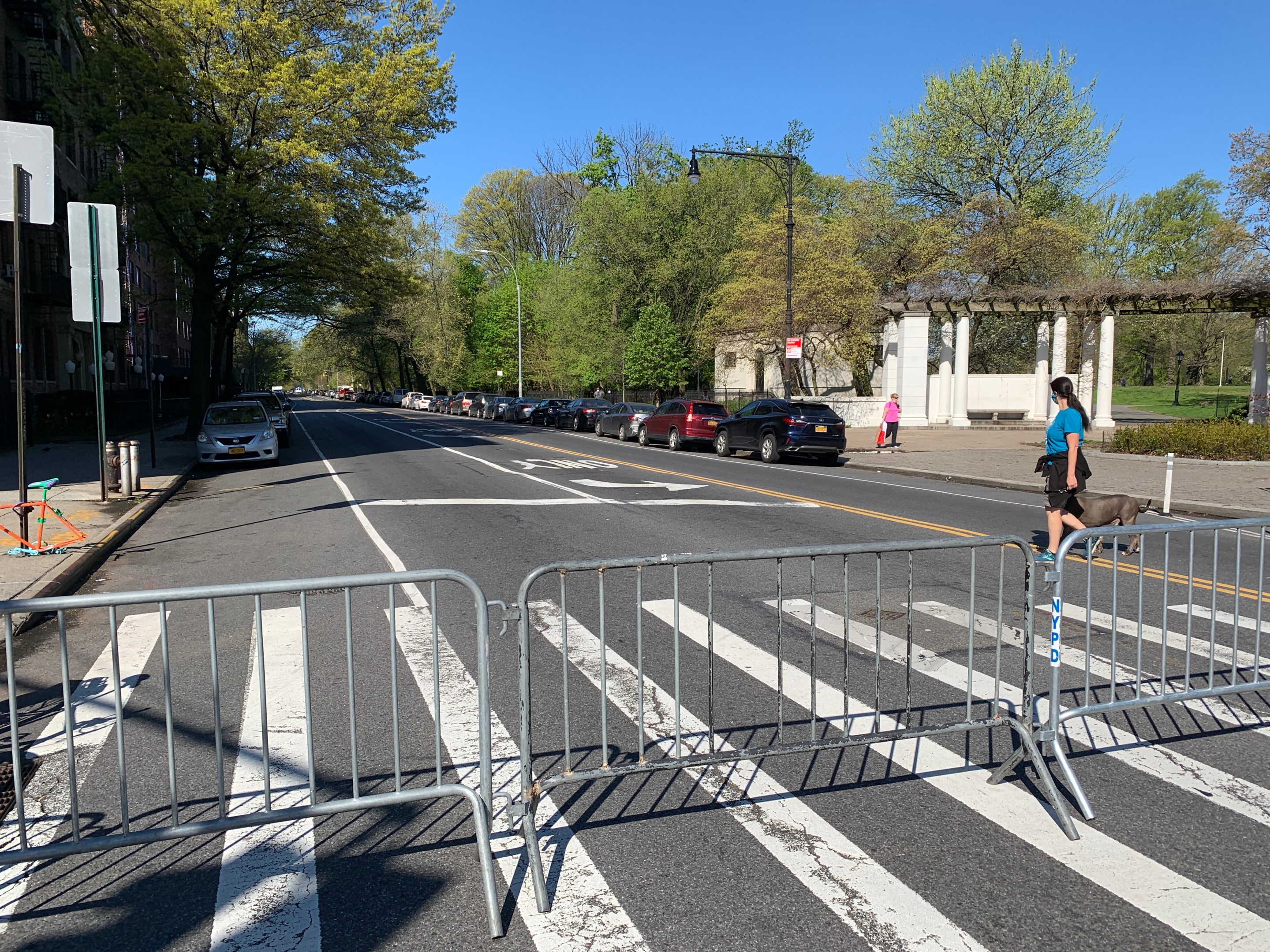
Here’s the open street on Parkside Avenue near Ocean Avenue — run by city workers. Photo: Gersh Kuntzman
The city’s plan to ultimately open 100 miles of streets for socially distant recreation and safe cycling during the COVID-19 crisis has so far left out areas hard-hit by the deadly virus, instead catering to already-wealthy neighborhoods rich in resources and open space — a pattern that follows years of inequitable distribution of safe-streets initiatives, advocates say.
“We’ve seen historically how the city has distributed street safety projects and it’s never been in an equitable way,” said Erwin Figueroa, an organizer with Transportation Alternatives. “What we want to see from the city is more in-depth community engagement.”
As of May 21, entire swaths of the outer boroughs have been totally excluded from the program, including in Southeast Queens, where the death rate in some ZIP codes is nearly twice the citywide average, according to tallies compiled by The City.
The local council member, who represents low-income and communities of color such as Arverne and Far Rockaway, was frustrated that his constituents — who are disproportionately suffering from both the virus and a lack of open space — again got the shaft.
“I was really disappointed to see the list and see not one street in Southeast Queens. Our children deserve open streets,” said Council Member Donovan Richards. “We’ve always had challenges around investment. This is a big borough and big city, every part of the borough has to be incorporated into planning and that our communities are also worthy of open streets as well, especially during a pandemic when people are really pent up.”
Richards said the Department of Transportation never reached out to his office to discuss potential streets that would work there before announcing the first 30 miles of open streets and bike lanes in the city. But that's a feature of the city program, not a bug: city officials insisted from the very beginning that they could open up some streets with existing staff — such as the seven-plus miles that are overseen by local NYPD precincts — but many of the 40 miles that are slated to be opened in May would be overseen by business improvement districts or community groups.
As a result, some communities are slower than others to do the city's work for it. Indeed, now Richards said he is working with other local pols in his district to come up with a list of streets that he wants opened up.
In Brooklyn, the city has not yet opened up one street south of Newkirk Avenue, nor one east of E. Seventh Street — leaving out neighborhoods such as Bay Ridge, Sheepshead Bay, Canarsie and Coney Island.
"We've been historically marginalized and historically neglected, and that continues to loom over us now," said Assembly Member Mathylde Frontus. “I am frustrated. South Brooklyn, we are always in a situation of begging. We are constantly reminding them about our needs here."
Frontus says her office is now in touch with DOT to identify potential open streets.
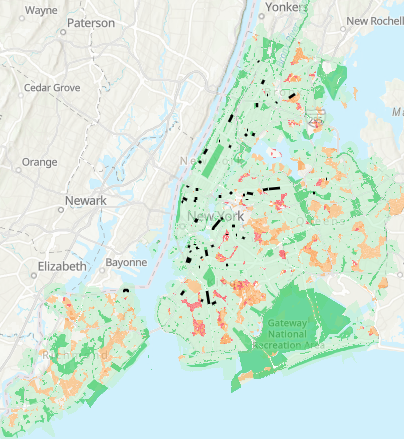
Map: The Trust for Public Land
And in car-dominant Staten Island, the mayor has so far rolled out just one open street not directly adjacent to a park — again leaving out the majority of the island, especially the communities of color hardest hit by the pandemic, according to the executive director of La Colmena, a community-based organization that works with day laborers, domestic workers, and other low-wage immigrant workers.
“When it comes to immigrant communities on Staten Island, we also want open streets. We want to be outside especially now that summer is coming up, and to not worry with the amount of people,” said Yesenia Mata, whose organization joined a coalition of seven dozen other small businesses, public health experts, and environmental advocates to demand the mayor expand and strengthen his open streets initiative.
The heavily Latino community of Port Richmond, which has the highest rate of infection on the island, according to city data, lacks enough space for its residents to recreate safely, and is in desperate need of more open streets, especially as the weather warms, said Mata.
“This community has been greatly impacted, having access to open streets ensures people will be able to go outside on walks and enjoy the summer with families — and I think it goes back to people often forgetting communities of color and immigrant communities, who just want to be able to be outside," she said. "Some of us do live in apartments with families, it’s hard to have social distancing. The Latino community has been most impacted and this would allow us to maintain that distance."
In the Bronx, where residents are dying at a rate two times that of the rest of the city, the mayor opened just small, incongruent blocks that leave out massive chunks of the heavily impacted borough.
"The plan the mayor provided is a great start, but we need more because open streets are important to correcting inequities in health that make COVID-19 so deadly," said Rachel Ingram, a senior program manager at Bronx Health REACH. "It's only small stretches that have been opened, only a block or two in length and there's large parts of the borough without them, such as the mid-Bronx."
The Trust for Public Land created a map that shows the city’s open streets in the context of areas in need for public space (worse still because the playgrounds have been shuttered). The map reinforces the inequitable distribution of open streets so far, according to Carter Strickland, the group's New York State director.
Most of the open streets should be rolled out in Central Brooklyn, Queens, and Eastern Bronx, in specific neighborhoods like Morris Park, Jackson Heights, Elmhurst, Flushing, Brownsville, and East New York. And there is no need to open streets in Manhattan — where many car-free streets have been created even though many of Manhattan's wealthy residents have fled, according to the group.
"If one of the goals is to alleviate park need, the city needs to do more," said Strickland. (The group's map does not show open streets that are inside parks, presumably on the grounds that those streets should already be off-limits to cars.)
City Hall previously told Streetsblog that the open streets program is still ramping up to its full 100 miles, and the mayor and Department of Transportation Commissioner Polly Trottenberg are committed to ensuring the program reaches the neighborhoods that need it most.
“As summer approaches, the mayor has left no doubt: everyone deserves a chance to enjoy the outdoors and safely get a breath of fresh air,” said City Hall spokesman Mitch Schwartz. “We’re excited to see New Yorkers of every background embrace this program, and we look forward to working with the City Council to add more streets in the weeks and months ahead.”
Julianne Cuba joined Streetsblog in February, 2019, after three years covering local news and politics at The Brooklyn Paper. There, she also covered the notoriously reckless private carting industry and hit-and-runs. A 2015 graduate of Stony Brook University’s School of Journalism Master’s Program, she lives in Brooklyn. Julianne is on Twitter at @julcuba. Email Julianne at julianne@streetsblog.org
Stay in touch
Sign up for our free newsletter
More from Streetsblog New York City
EXCLUSIVE: OMNY Debuts on Fair Fares After Delays
The long-awaited Fair Fares expansion will launch as a three-month pilot for a few dozen riders.
Good Luck Docking Your Citi Bike In Lower Manhattan
Many frustrated commuters to Lower Manhattan opted to simply abandon their Citi Bikes undocked due to the lack of open spots in the area.
Wednesday’s Headlines: ‘ACE’ in the Hole Edition
The MTA approved a $141-million contract to put hundreds of new automated traffic enforcement cameras on buses. Plus more news.
Trump Trial Street Closures Push Pedestrians, Cyclists into Busy Traffic
News vans have dangerously blocked the sidewalk and bike lane on Lafayette Street daily since Donald Trump's trial began nearby two weeks ago.
Eyes On The Street: Coastal Resiliency Causes Mess For Pedestrians and Cyclists
Unfortunately for cyclists and pedestrians, this situation won't be fixed until "at least 2026.”


